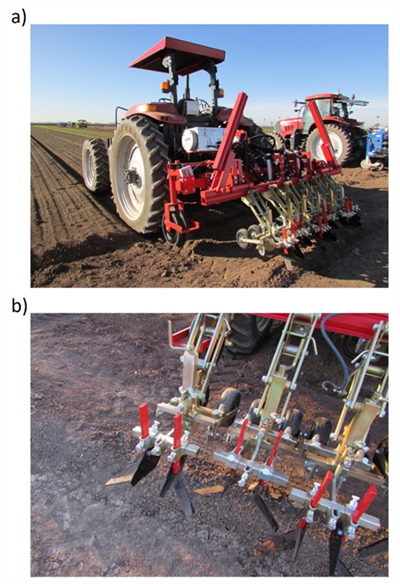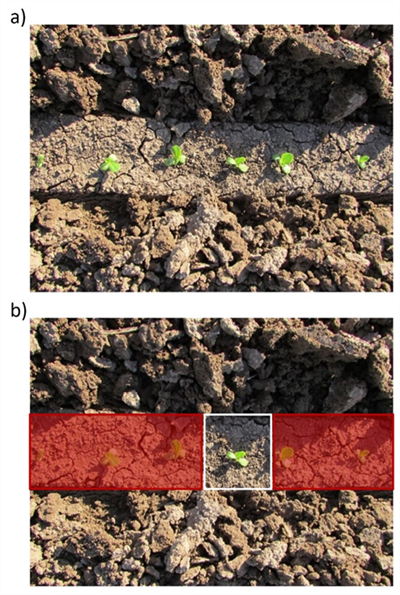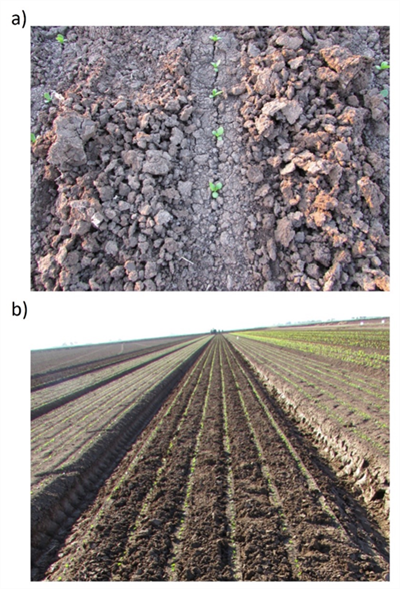
Some major events and developments have taken place recently in the Colorado river water shortage arena. As a result, we are entering into a series of substantial and complicated legal aspects associated with the Colorado River situation.
As part of the SW Ag Summit that is taking place in Yuma this week, we are conducting a breakout session on Thursday, 23 February 2023 titled “Colorado River Water Shortage: Agricultural Perspectives”.
This session will provide a brief review of the background and current situation on the Colorado River and very importantly it will include perspectives from members of the lower Colorado River agricultural community including the Palo Verde Valley, the Imperial Valley, and the Yuma area irrigation districts.
The program outline is as follows:
2023 Southwest Ag Summit
Educational Program
Thursday – February 23, 2023
Morning Breakout Session
9:30 am – 11:30 am
This study was conducted at the Yuma Valley Agricultural Center. The soil was a silty clay loam (7-56-37 sand-silt-clay, pH 7.2, O.M. 0.7%). Spinach ‘Meerkat’ was seeded, then sprinkler-irrigated to germinate seed Jan 13, 2025 on beds with 84 in. between bed centers and containing 30 lines of seed per bed. All irrigation water was supplied by sprinkler irrigation. Treatments were replicated four times in a randomized complete block design. Replicate plots consisted of 15 ft lengths of bed separated by 3 ft lengths of nontreated bed. Treatments were applied with a CO2 backpack sprayer that delivered 50 gal/acre at 40 psi to flat-fan nozzles.

Downy mildew (caused by Peronospora farinosa f. sp. spinaciae)was first observed in plots on Mar 5 and final reading was taken on March 6 and March 7, 2025. Spray date for each treatments are listed in excel file with the results.
Disease severity was recorded by determining the percentage of infected leaves present within three 1-ft2areas within each of the four replicate plots per treatment. The number of spinach leaves in a 1-ft2area of bed was approximately 144. The percentage were then changed to 1-10scale, with 1 being 10% infection and 10 being 100% infection.
The data (found in the accompanying Excel file) illustrate the degree of disease reduction obtained by applications of the various tested fungicides. Products that provided most effective control against the disease include Orondis ultra, Zampro, Stargus, Cevya, Eject .Please see table for other treatments with significant disease suppression/control. No phytotoxicity was observed in any of the treatments in this trial.
A technique that I’ve been curious about for some time now to minimize the number of weeds close to crop plants is the use of early (seedling stage of growth) close cultivation. Early close cultivation can be accomplished using a camera guided cultivator equipped with specially designed cultivating tools. Examples of the technology and technique were demoed at our 2016 and 2022 AgTech Field Days by K.U.L.T.-Kress, LLC1, the manufacturer of the equipment. The systems basically comprised a camera vision system for tracking the crop row, a toolbar attached to a parallel linkage that facilitated side-to-side movement and small cultivator assemblies for each of the seedlines (Fig. 1). In the demos conducted in lettuce, cultivating tools were positioned such that the uncultivated band was only about 2” wide (Fig. 2). If the crop were thinned by hand hoe or chemically, only a small area (roughly 2” x 2”) around the keeper plant would remain that had not been cultivated or treated with an herbicide material (Fig. 3). Assuming that existing weeds were controlled, and no new weeds emerge, the number of weeds close to the crop plant would be minimal. I realize soil disturbance near the crop plant is not desired but cultivating 1” away from seedling lettuce should be comparable to, and not cause any more crop injury than thinning seedlings spaced 2” apart with a hand hoe. I’m curious what your thoughts are on this. I’d love to hear your feedback.
[1] Reference to a product or company is for specific information only and does not
endorse or recommend that product or company to the exclusion of others that
may be suitable.

Fig. 1. K.U.L.T.-Kress camera guided cultivator (a) equipped with cultivating tools
designed for close cultivation (b). (Photo credits: Mazin Saber, University of
Arizona)

Fig. 2. Close cultivation of seedling lettuce with a camera guided
cultivator. Close up view (a) and far view (b). (Photo credits: Mazin Saber,
University of Arizona)

Fig. 3. Close cultivation of seedling lettuce with camera guided
cultivator leaves a roughly 2” wide uncultivated band around the
seedline (a). Thinning by hand hoe or chemically would kill plants in the
seedline (red shaded area) and leave a small area (roughly 2” x 2”)
(indicated by white box) around the keeper plant that had not been
cultivated or treated with an herbicidal material (b). Assuming no new
weeds emerge, the number of weeds near the crop plant that are
difficult and time consuming to remove is minimal.
Fig. 4. Video of camera guided cultivator equipped with cultivating tools
designed for close cultivation operating in six-line seedling romaine
lettuce. Click here or on the image to see the video. (Video credit: Mazin
Saber, University of Arizona)
As we continue to be impacted by the drought in Arizona with a 21% reduction in the Colorado River water allocation, we need to reconsider every option for water conservation in our agricultural operations.
We know that weeds compete with our crops for water, nutrients, and space causing yield reductions. However, how much water are we loosing due to high weed infestations?
Some researchers have concluded that weeds use more water than various crops and consider them “water wasters”. Therefore, good weed control can contribute to raise available water for our crops. Transpiration of some of the most common annual weeds is approximately four times higher than crop plants. It has also been reported that weeds use up to three times the amount of water to produce a pound of dry matter. A study showed “common lambsquarters (Chenopodium album) requires 658 pounds of water to produce one pound of dry matter, common sunflower (Elianthus annus) requires 623 pounds, and common ragweed 912 pounds, compared with 349 pounds for corn and 557 pounds for wheat1.” It has been reported that increase from 0 - 8 plants / row meter of Palmer amaranth (Amaranthus palmeri) densities in corn decreased soil water available and the water use efficiency (WUE) of corn.
Uncontrolled weed growth can add direct irrigation costs of more than $50/ha while even weed densities below economic thresholds can add ~$20/ ha in production costs depending upon the cropping system and water cost (Norris,1996).
Under stress condition such as we experience yields can be reduced more 50% just by moisture competition. Other factors that influence water loss are weed densities, transpiration rate, other weed characteristics like root system and depth. For example, perennial weeds with a well-established root system are more drought resistant because they can explore better the soil profile.
Some report that weeds can potentially cause 34 percent of crop loss worldwide. We have seen how weeds cut the water flow in irrigation ditches and cause more evaporative loss. We believe weed control is essential for water conservation purposes and further research is needed in this matter.
Reference:
1. https://www.researchgate.net/profile/Hussein-Abouziena-2/publication/278020092_Water_loss_by_weeds_A_review/links/5578c26608ae752158703bdc/Water-loss-by-weeds-A-review.pdf
Results of pheromone and sticky trap catches can be viewed here.
Corn earworm: CEW moth counts down in all traps over the last month; about average for December.
Beet armyworm: Moth trap counts decreased in all areas in the last 2 weeks but appear to remain active in some areas, and average for this time of the year.
Cabbage looper: Moths increased in the past 2 weeks, and average for this time of the season.
Diamondback moth: Adults increased in several locations last, particularly in the Yuma Valley most traps. Below average for December.
Whitefly: Adult movement remains low in all areas, consistent with previous years
Thrips: Thrips adult movement continues to decline, overall activity below average for December.
Aphids: Winged aphids still actively moving but declined movement in the last 2 weeks. About average for December.
Leafminers: Adult activity down in most locations, below average for this time of season.